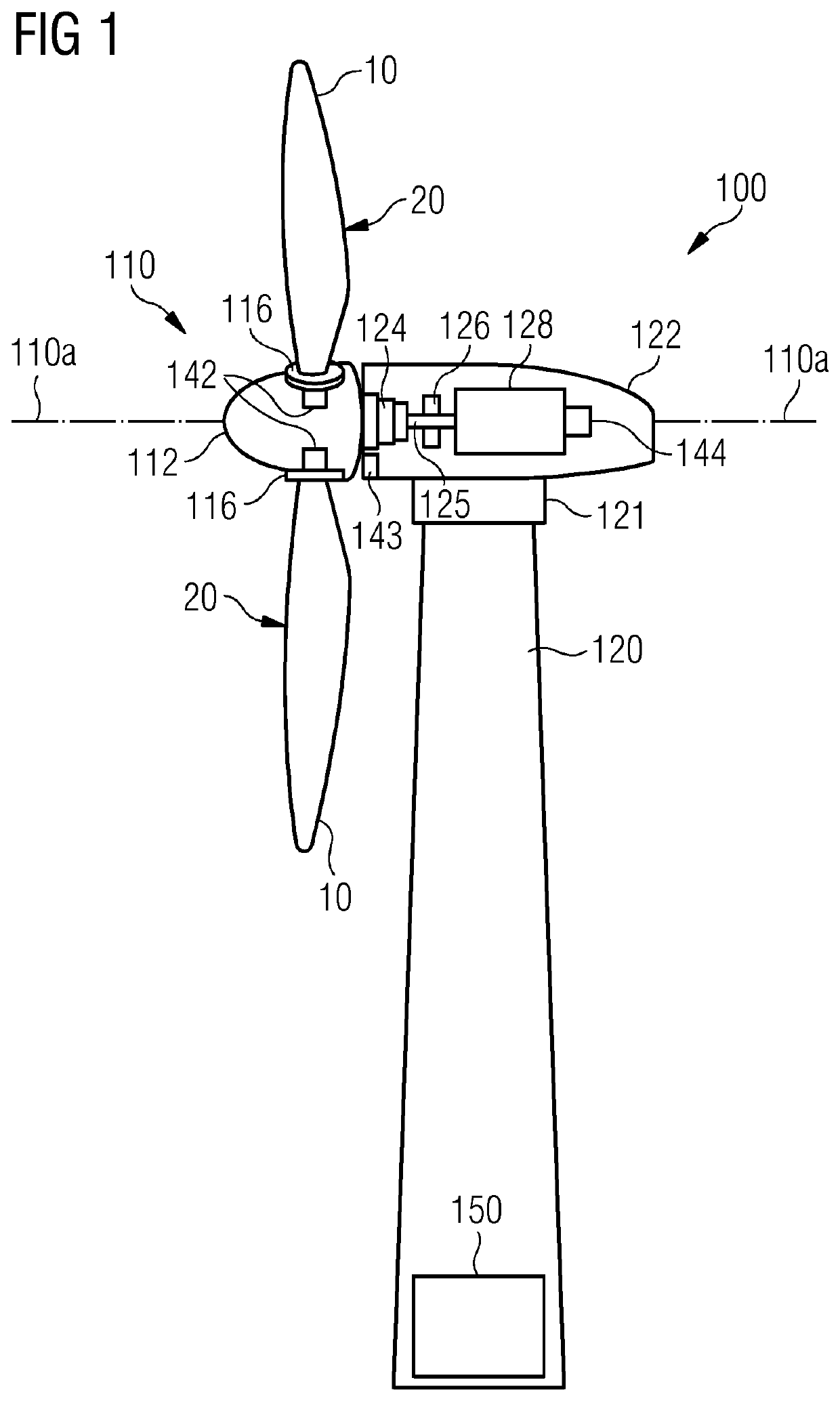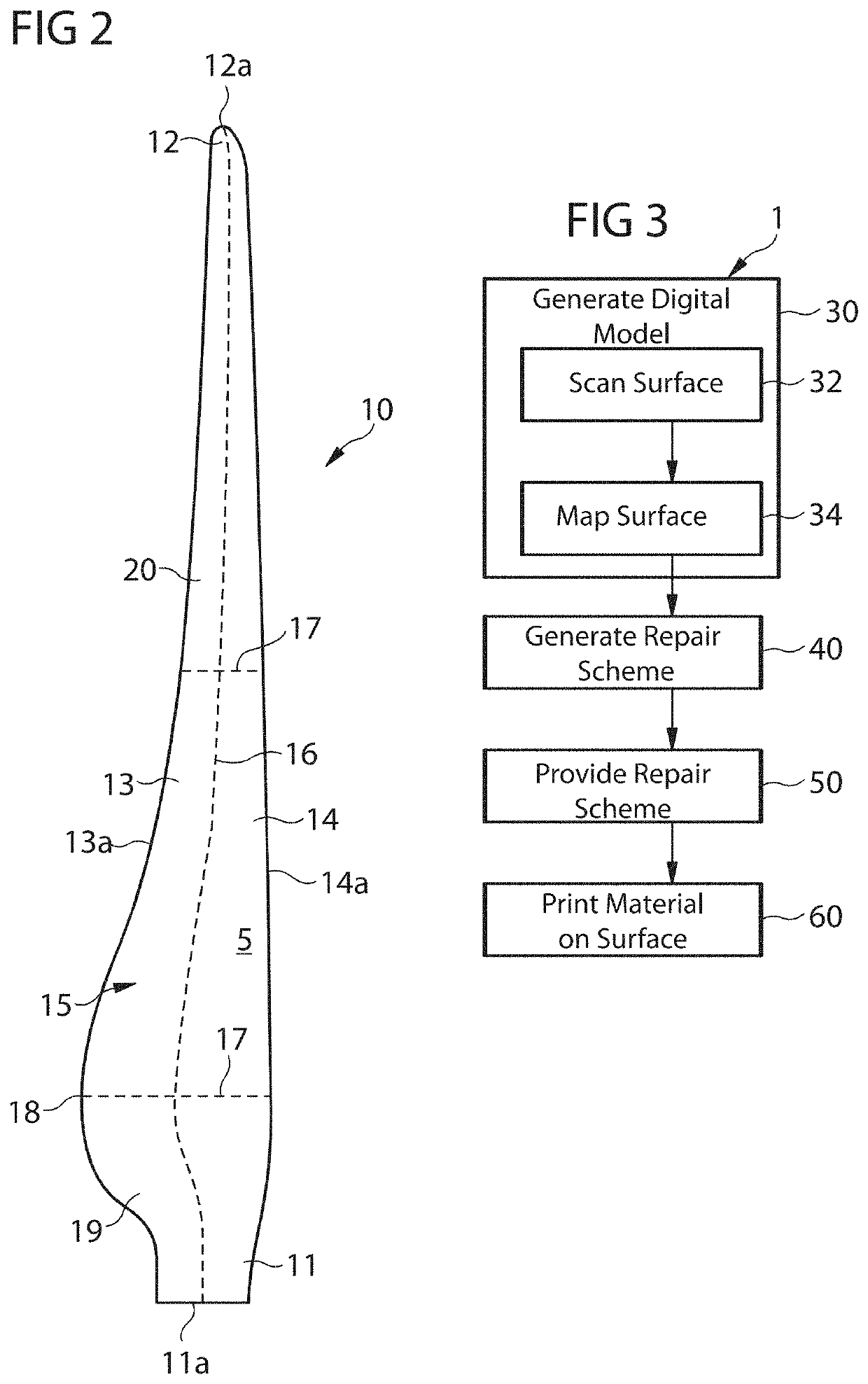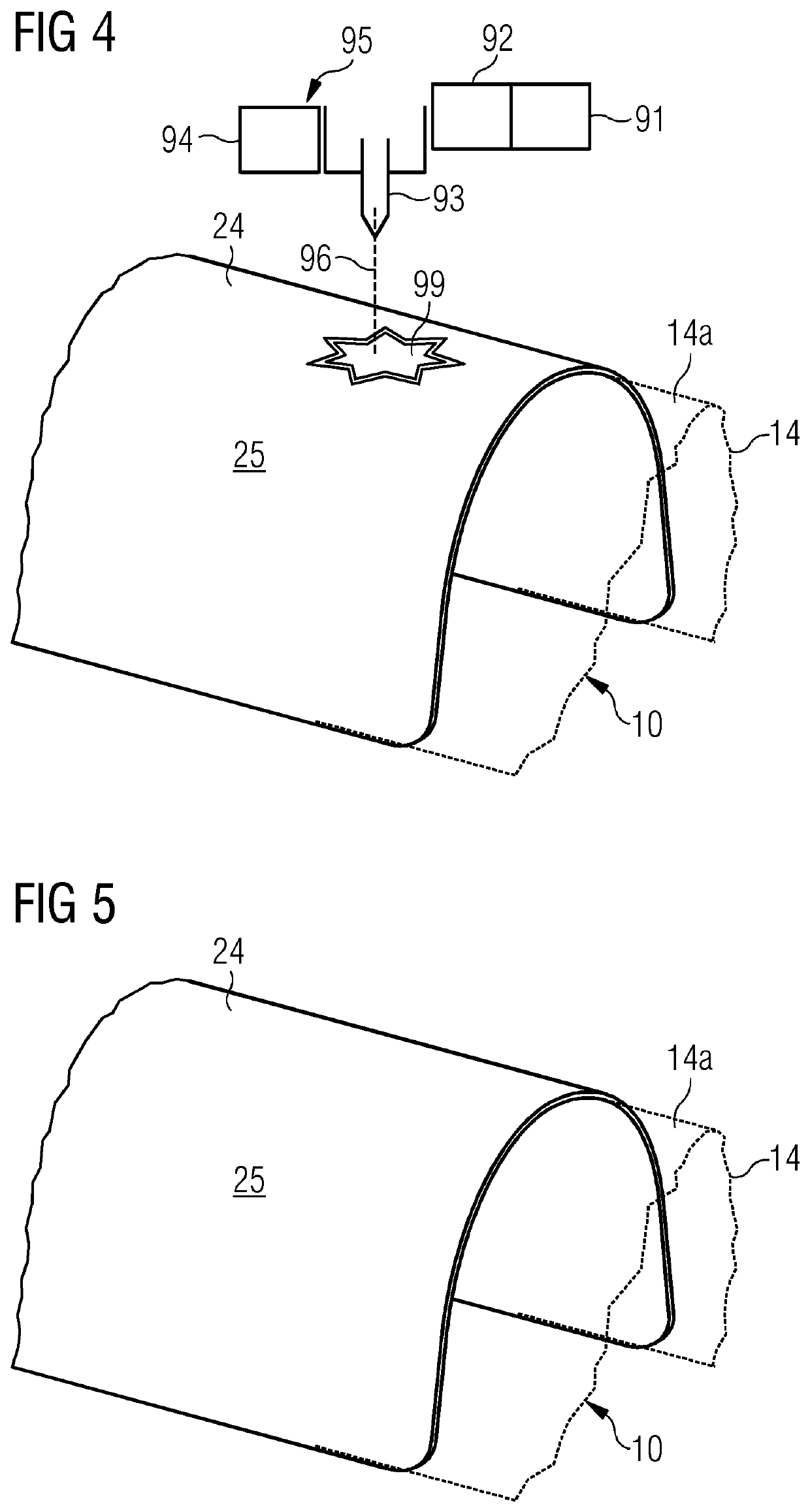Method for on-site repairing of a wind turbine component
a technology for wind turbines and components, applied in the direction of motors, programme control, engine fuctions, etc., can solve the problems thus the power output of the turbine, thus reducing the aerodynamic efficiency of the blade. , to achieve the effect of reducing the maximum output power of the wind turbine, the effect of reducing the aerodynamic efficiency of the blad
- Summary
- Abstract
- Description
- Claims
- Application Information
AI Technical Summary
Benefits of technology
Problems solved by technology
Method used
Image
Examples
Embodiment Construction
[0027]FIG. 1 shows an exemplary embodiment of a wind turbine 100 of the present technique. The wind turbine 100 includes a tower 120, which is mounted on a fundament (not shown). A nacelle 122 is mounted on top of the tower 120 and rotatable with regard to the tower 120 by means of a yaw angle adjustment mechanism 121 such as yaw bearings and yaw motors. The yaw angle adjustment mechanism 121 functions to rotate the nacelle 122 around a vertical axis (not shown) referred to as a yaw axis, which is aligned with the longitudinal extension of the tower 120. The yaw angle adjustment mechanism 121 rotates the nacelle 122 during operation of the wind turbine 100 to ensure that the nacelle 122 is appropriately aligned with the current wind direction to which the wind turbine 100 is subjected.
[0028]The wind turbine 100 further includes a rotor 110 having at least a rotor blade 10, and generally three rotor blades 10, although in the perspective view of FIG. 1 only two rotor blades 10 are vi...
PUM
| Property | Measurement | Unit |
|---|---|---|
| life time | aaaaa | aaaaa |
| aerodynamic properties | aaaaa | aaaaa |
| thermoplastic | aaaaa | aaaaa |
Abstract
Description
Claims
Application Information
 Login to View More
Login to View More - R&D
- Intellectual Property
- Life Sciences
- Materials
- Tech Scout
- Unparalleled Data Quality
- Higher Quality Content
- 60% Fewer Hallucinations
Browse by: Latest US Patents, China's latest patents, Technical Efficacy Thesaurus, Application Domain, Technology Topic, Popular Technical Reports.
© 2025 PatSnap. All rights reserved.Legal|Privacy policy|Modern Slavery Act Transparency Statement|Sitemap|About US| Contact US: help@patsnap.com



